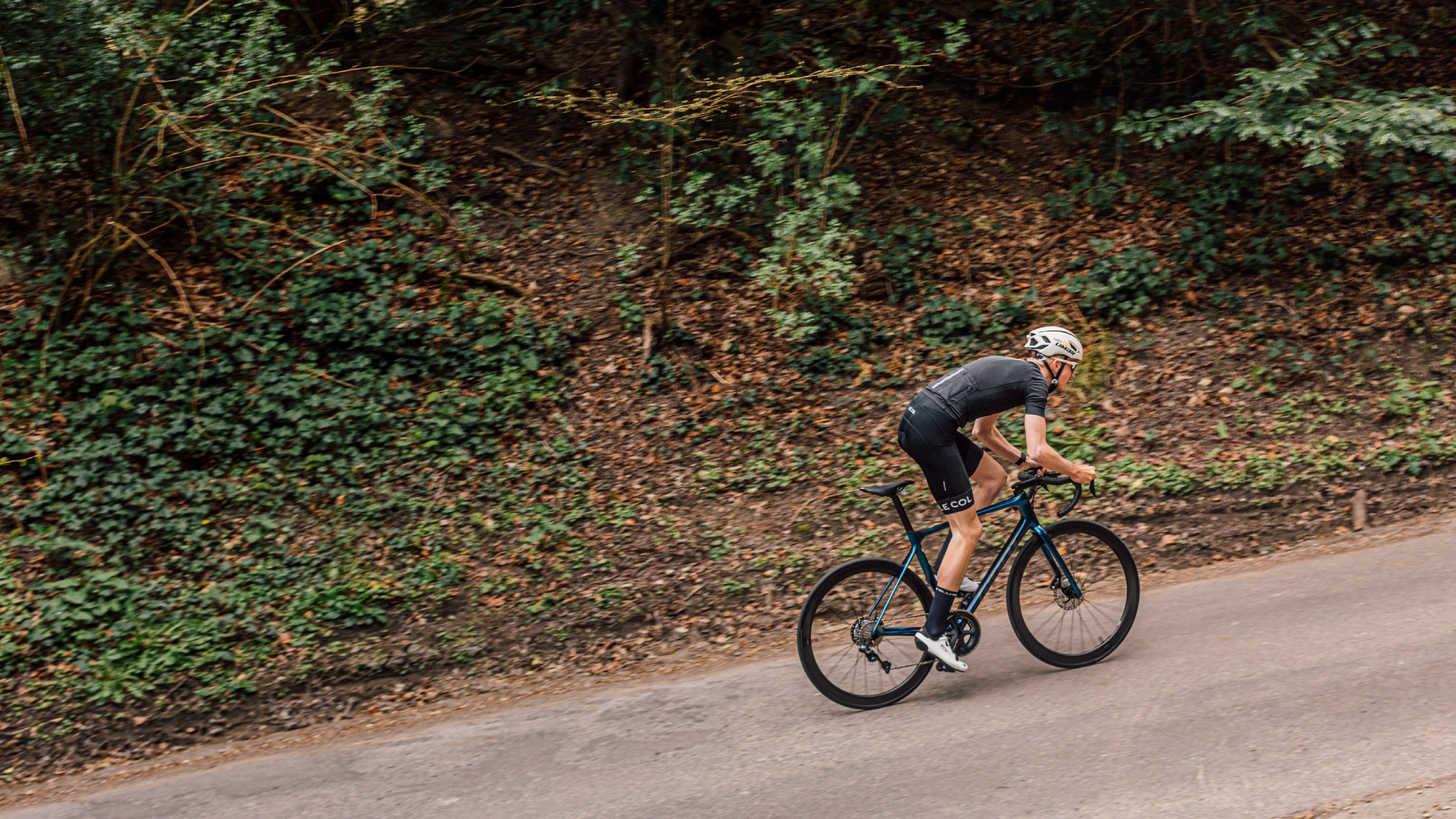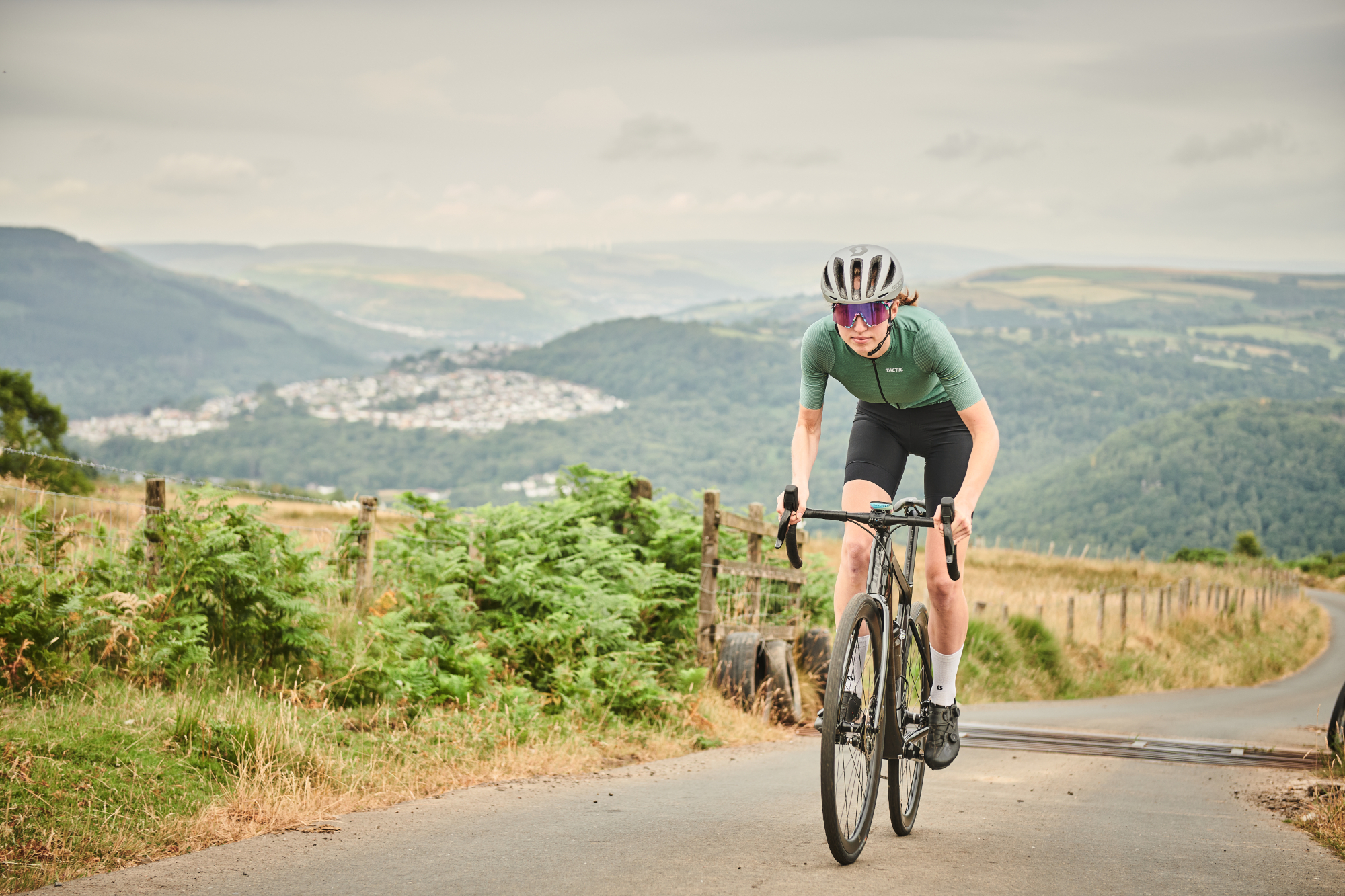Climbing out-the-saddle vs in-the-saddle: pros and cons of each approach
Are there advantages to climbing out of the saddle or is it better to stay seated?


Have you ever noticed that some riders seem glued to the saddle while others seem to be endlessly dancing on the pedals? Are there advantages to climbing out of the saddle? Or is it better to keep your bum planted?
If you’re looking to improve your climbing - whether it’s to snatch yourself a Strava KOM, improve your time up a prominent local climb, such as Box Hill, or as part of a general cycling training plan to improve your average speed of your rides - you might be wondering if there’s anything you can do to optimise your riding technique.
Pros of riding climbs in the saddle
The advantage of being out of the saddle is that it can help you more produce torque. Torque is how much force you are applying to the pedals, but this shouldn’t be confused with power output.
If you’re training with a power meter, this will provide you with a power output reading which is simply how much force (torque) you are applying to the pedals multiplied by how fast you are turning them (cadence). Torque is more important on climbs than on the flat, as when it comes to riding up steep climbs, you are having to overcome both gravity and wind resistance to make forward progress. This means that there are more forces trying to slow you down.
We have all felt that sensation as we hit a climb; we are forced to push harder on the pedals and inevitably our cadence drops a little. Straight away it somehow feels harder. Well, it’s the increase in the torque requirement that you are feeling.

To overcome this, it can feel quite natural to get out of the saddle. When we get out of the saddle, we don’t only use our leg muscles to apply force to the pedal, but we can also use our body weight. In very basic terms, this allows us to push harder. If we can keep the cadence the same, or even if it only drops slightly, then this increase in torque means we are, overall, able to produce more power and go faster.
So, on steep climbs where you feel your cadence naturally dropping getting out of the saddle might help you maintain your power and get to the top faster.
The latest race content, interviews, features, reviews and expert buying guides, direct to your inbox!
Cons of riding climbs out of the saddle
So far so good. However, there are also disadvantages to being out of the saddle. Firstly, whenever you get out of the saddle you use more muscle mass, suddenly rather than just pedalling with your legs, you will find that you are also engaging your core and arms to move your body mass around to allow you to push harder on the pedals. This means that, compared with riding in the saddle, more muscles are being recruited.
All that extra muscle recruitment means you need to take in more oxygen; this is why most riders report a higher heart rate for the same power when out of the saddle. However, at a certain point, it just isn’t possible to take in any more oxygen and you will not be able to maintain that increased muscle recruitment and those elevated power outputs. An increased oxygen intake for the same power output is what coaches and sports scientists call a loss in efficiency. This decrease in efficiency can lead to athletes fatiguing more quickly – so excessively riding out the saddle may be more fatiguing than staying seated.
The second disadvantage of being out of the saddle is that when you stand up you increase your frontal area. This means your body is creating more aerodynamic drag which means, and for the same power, you will be going slower. Therefore, not only are you going to be using more oxygen out of the saddle but you might also be going slower…
Getting out of the saddle is a trade-off, on one side it allows you to produce more torque and power, but it also means you become a little less efficient and a little less aerodynamic.
Therefore, it makes sense to only get out of the saddle when you need to produce shorter bouts of power.
Where the cross-over point is between the advantages and disadvantages of being out of the saddle will be different for each rider. It will depend on how good a rider’s technique is when riding out of the saddle. Some riders will be almost as efficient out of the saddle as in the saddle, whereas for others there is a much bigger trade-off. However, in both cases, the best riders will mix it up and use both stances to optimise their riding.
So how do you choose which is best and when you should be standing? Well, luckily it seems that your body knows best. Research into when riders decided to switch between standing and sitting showed that riders automatically stood up once they reached a certain torque threshold and sat down again once it was no longer beneficial to be out of the saddle; such as when their cadence became too high. Therefore, it seems that in this case, your body knows best – don’t overthink it and you will most likely find yourself automatically adopting what is best for you at any given moment.
James Spragg is a sports scientist and coach, working both in research and applied settings. When not working with athletes James can be found skiing, climbing, cycling or drinking coffee!
Alongside Dan Lorang and Peter Leo, James runs Intercept Performance Consultancy. Over the last 8 years in various roles, as coaches, performance consultants, performance managers, and sports scientists, Dan, James and Peter have played a role in helping athletes achieve more than 10 World Championship titles, several Olympics medals (including a Gold and Silver Medal in Tokyo 2020) and several Top 5 results in some of the biggest sporting events on the planet (Tour de France, Olympics, World and European Championships). Our single focus is on improving performance in all settings.
